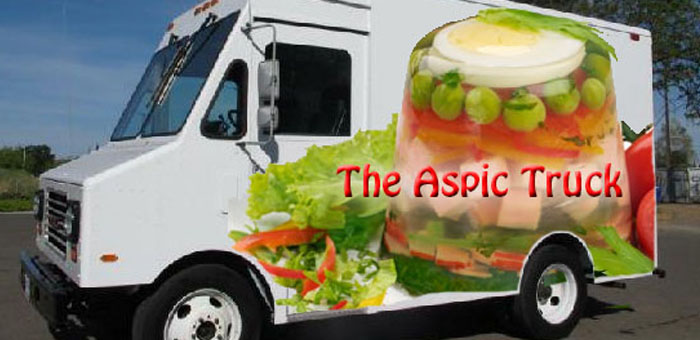Since the surge in popularity of gourmet food trucks in 2008, enterprising mobile chefs have taken just about every regional cuisine from around the world and either attempted to elevate it or fuse it with another with great success.
From Roy Choi’s Korean BBQ tacos to the New York based food truck 666 Burger’s “Douche Burger”, (kobe beef patty wrapped in gold leaf, foie gras, caviar, lobster, truffles, aged gruyere cheese and served in a $100 bill wrapper), almost everything has been tried and has reached varying levels of acceptance from their customers.
Over the years I have watched new food trucks pop up across the country and marveled at the different menus that have been pulled together and wondered what the next culinary trend will be in the mobile food industry. It seems as though every city that has their food truck population grow will inevitably end up with trucks that serve tacos, grilled cheese sandwiches, bbq, burgers, vegetarian and for dessert; cupcakes.
Food truck concepts have been developed which have included cuisines that have come from around the streets of the world including a few Native American cuisine trucks that have surfaced.
The one concept that has yet to be tried (and in the opinion of many Americans, for good reason) is a truck based on aspic. If you haven’t attended culinary school or studied classical cooking techniques you may be wondering what aspic is, and why it’s unlikely we’ll see an aspic truck stopping on the streets of Anytown, USA anytime in the near future.
Aspic While the exact date in history in which aspic was revealed to an unsuspecting cook is unknown, we do know that the process of extracting gelatin from animal bones has been taking place for centuries. Unlike today’s usage of gelatin for desserts, aspic use can be looked at as one of the earliest forms of sustainable cooking since it utilized as much of an animal as possible. Also due to the fact most of its flavors were derived from coagulated animal protein it was used as a savory dish. When attempting to remove all of the meat from animal bones, they would be placed in a boiling pot of water to cook the meat enough that it could be completely removed and served. Soups would simultaneously be created from the bones by extracting their flavors in the hot water. During the cooling process, the proteins from the bones coagulated and this savory gelatinous form became part of their diet. Over the years aspic transitioned from a peasant food to one of the aristocrat, since it took a chef’s touch to convert the once cloudy form into a clear gelatin that could be served hot. In the early 1800’s, Marie-Antoine Careme (the French “King of Chefs and Chef of Kings”) began using this savory gelatin as a glaze or caud froid sauce to make his meals more interesting and flavorful. This technique became part of the haute cuisine movement and was very popular in Europe and the United States until the mid-1900’s. Due to the difficulty level and costs involved in creating various aspic dishes, this classical technique began to lose its popularity in restaurants and home dining rooms. By the time the 1970’s came around, many kitchens had staff members that just didn’t have the knowledge to execute an aspic properly and the only time aspic would be used would be by aspiring home cooks who might encase hotdogs or canned tuna with aspic. These types of “experiments” and changing American palates are the most likely reasons for the disappearance of aspic from restaurant and home menus in the last 40 years. Over the last decade, offal (typically disregarded parts of butchered animals) has been able to make a comeback with the “Nose to Tail” food movement. Unfortunately, the use of liver, foie gras, tongue and bone marrow to bolster menus has been easier to entice diners with than dishes such as head cheese (aspic from head meat). The biggest hurdle to jump for any chef looking to start a food truck concept based on savory aspic, will be to get a couple of generations that have grown up with Jell-O brand gelatin and Jell-O shots to forget the expectation of sweetness when placing a gelatinous form into their mouths. While it may not be impossible to change the public’s opinion and desire for aspic, it’s certainly going to take the entire food service industry cooperation, not a single food truck. Do you have any memories of aspic? We’d love to hear them. You can share in the comment section below or on social media. Facebook | TwitterAspic – A Brief History
A Resurgence of Aspic?




